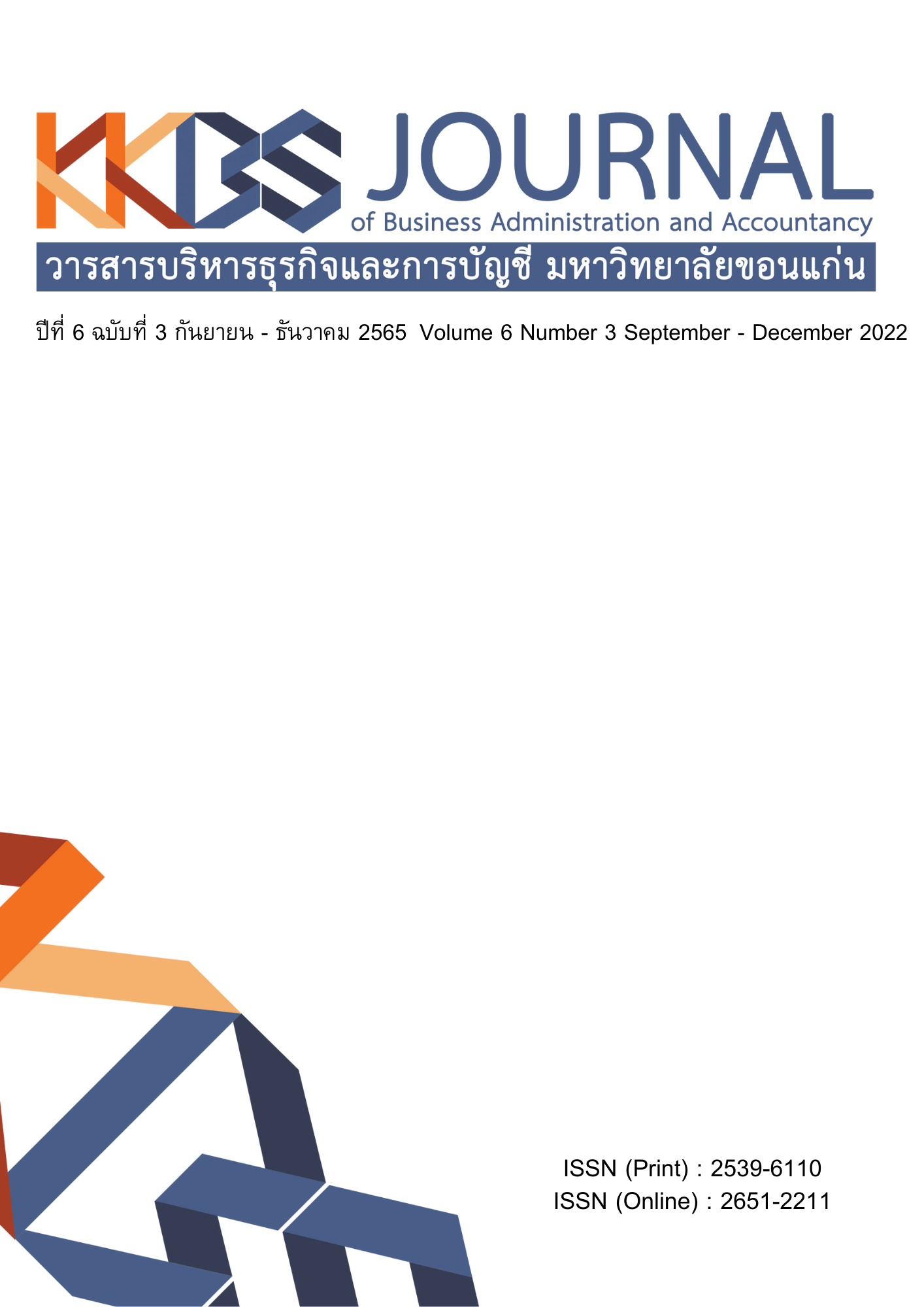Tourism Development Guidelines for the Army Land Project: The 210 th Military Circle, Phra Yot Muang Kwang Military Base, Nakhon Phanom province
Main Article Content
Abstract
The objectives of this research are 1) to study the potential of tourist attractions in the area of the 210th Military Circle, Phra Yot Muang Kwang Military Base, Nakhon Phanom Province 2) to analyze travel scenarios under the Army Land Project of the 210th Military Circle, Phra Yot Muang Kwang Military Base, Nakhon Phanom Province and 3) to suggest ways to develop tourism under the Army Land Project of the 210th Military Circle, Phra Yot Muang Kwang Military Base, Nakhon Phanom Province by using the Qualitative Research Method. The approaches used in this research method consist of a non-participant observation and a semi-structured in-depth interview. The researchers used purposive sampling in which the researchers considered choosing 15 members of the population involving in tourism development. They were from government sector, private sector, and local people. The researchers also used the concept of tourism potential (5As) in the research.
From the study, the researchers found that the tourist attractions in the area of the 210th Military Circle, Phra Yot Muang Kwang Military Base, Nakhon Phanom Province have the ability to accommodate tourists, which the researchers consider five aspects including 1) what attracts tourists 2) access to the tourist attractions 3) facilities 4) accommodations and 5) tourism activities.
From the analysis of the traveling situations, the researchers found that there are many strenghts of the tourist attractions in the area of the 210th Military Circle, Phra Yot Muang Kwang Military Base, Nakhon Phanom Province including 1) a wide range of types of unique traveling activities 2) knowledge for tourists to learn from and 3) safe activities tourists can feel confident to attend. Nevertheless, there are also many weaknesses of the tourist attractions including 1) lack of cooperation with other parties in advertizing the tourist attractions 2) no officials at each tourist attraction 3) lack of connection with other tourist attractions. In the meantime, there are a lot of opportunities for the tourist attractions in the area of the 210th Military Circle, Phra Yot Muang Kwang Military Base. The first opportunity is that there are many tourism facilities outside the area of the 210th Military Circle, Phra Yot Muang Kwang Military Base. The second opportunity is that Nakhon Phanom Province has several kinds of transportation for tourists. The next opportunity is that both the army and Nakhon Phanom provincial government set aside a budget to support tourism under the Army Land Project. As to threats, there are limitations due to rules and restrictions of the 210th Military Circle, Phra Yot Muang Kwang Military Base. Another threat factor is that a budget from the government is never enough to improve the tourist attractions. The next threat is that the public transportations within Nakhon Phanom Province are not enough for tourists’ need.
Guidelines to tourism development under the Army Land Project in the area of the 210th Military Circle, Phra Yot Muang Kwang Military Base are as follows: 1) there should be more facilities for tourists such as tourist information center, souvenir shops, restaurants, standard restrooms and parking lots 2) there should be more modern adventure activities such as BB GUN shootings, slingshot shooting, planting trees, ATV drives or Go Kart around the 210th Military Circle, Phra Yot Muang Kwang Military Base 3) there should be more advertizing about the tourist attractions and joint travel programs cooperated by government sector, private sector, and local people along with tourism management which can help turn the 210th Military Circle, Phra Yot Muang Kwang Military Base into a famous tourist attraction under the Army Land Project, leading to better economic improvement of Nakhon Phanom Province.
Article Details

This work is licensed under a Creative Commons Attribution-NonCommercial-NoDerivatives 4.0 International License.
The articles published in the journals are the authors' opinions, not the opinion of the editorial team or administrative staff. The articles published is copyright of the Journal of Business Administration and Accounting, Khon Kaen University.
References
Arjnarong Tansuwannarat. (2011). The management of tourism development in the area of Air Force 5th Royal Flying Prachuap Khiri Khan Province. Bangkok: National Research Council of Thailand (NRCT).
Chutikan Kantha-Oo. (2017). Community based tourism: A case study of Baan Rong Fong, Rong Fong Sub-District, Mueang Phrae District, Phrae Province. Bangkok: Chulalongkorn University. (In Thai)
Cooper, C. & Hall, C.M. (2008). Contemporary tourism: an international approach. New York: Routledge.
Creswell, J.W. & Miller, D.L. (2000). Determining validity in qualitative inquiry. Theory into practice, 39(3), 124-130.
Danai Winairat. (2019). Guidelines for the management of cultural tourism market in Phetchaburi Province to integrate into the West Coast tourism development zone. Bangkok: Rajamanggala University of Technology Rattanakosin. (In Thai)
Department of Civil Affairs 201th Military Circle. (2020). The tourism location in 201th Military Circle. Retrieved January 9, 2020, from https://210mc.rta.mi.th/site/แหล่งท่องเที่ยว. (In Thai)
Department of Tourism Nakhon Phanom Province. (2017). Statistics of tourists in Nakhon Phanom Province 2017. Retrieved November 7, 2019, from https://nakhonphanom.mots.go.th/graph_views.php?graph_id=41. (In Thai)
Department of Tourism, Tourism Authority of Thailand. (2015). Tourism management standards. Bangkok: Chulalongkorn University Press. (In Thai)
Jackson, S.E., Joshi, A. & Erhardt, N.L. (2003). Recent research on team and organizational diversity: SWOT analysis and implications. Journal of Management, 29(6), 801-830.
Marigar Palagawong Na Ayuthya. (2010). A determination of evaluation criteria for the Royal Thai Army Tourism Sites. Bangkok: Srinakharinwirot University. (In Thai)
Tourism Authority of Thailand. (2018). The Signing Ceremony of a Cooperation Agreement for The Promotion and Development of Tourism in The Royal Thai Army, The "Army Land" Project. Retrieved November 5, 2019, from https://www.mots.go.th/News-view.php?nid=11094. (In Thai)
Tourism Western Australia. (2008). 5A’s of Tourism. Retrieved January 3, 2020, from http://www.tourism.wa.gov.au/jumpstartguide/totb_5Asoftourism.
Tussanawalai Tuntiekaratana. (2017). The development guidelines for eco-tourism management participation of the local people: Case study of Libong Island, Kantang District, Trang Province. Bangkok: Suan Dusit Rajabhat University. (In Thai)


